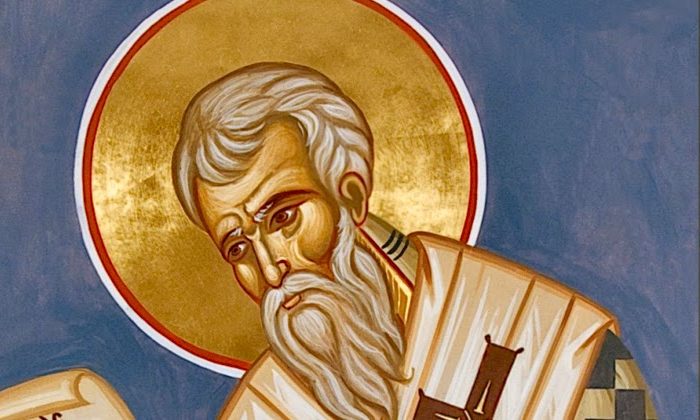There’s no reason we would know about Cyril of Jerusalem, a bishop and a liturgical theologian and ultimately a saint. For those of us who make the claim to be liturgical historians, Cyril’s a big deal. Liturgy people know the 4th-century pilgrim Egeria who happened to be in Jerusalem to witness the Holy Week and Easter liturgies led by Bishop Cyril. Egeria is the earliest record we have of the liturgical rites of the time. Her descriptions has long fascinated and puzzling. Egeria’s eye-witness account was a progression (and a procession) of several days of liturgy as it was lived then; the witness she gives the nature of the promise of life given be the Lord. What Egeria and thus Cyril did was to recount the narrative of creation and salvation history as known through the lens of the Lord’s Paschal Mystery, i.e., the Lord’s passion, death, resurrection, and ascension.
The people in front of Cyril were reminded that by Easter all was done. No, he pointed us to think differently about the questions of life and the longing for God in a different way. Cyril reminds us, even in 2024, that we are made for a Promise –that is, eternal life– that they we are now just getting started. Cyril tells us that with Jesus Christ, Love incarnate, is here to redeem us.
As it is stated elsewhere, we should never think of Lent as a stand-alone season. When Lent is over it’s not really over; Lent is the preamble to a lifetime of reflection on Jesus, his Gospel and the sacred duties (Tradition) to which he calls each of us.
The importance of Cyril for us today is that he brings to the table the awareness that we are a people of a promise, of expectation and desire. The awareness is that of truly living, fully flourishing as human being. We are human beings where desire, expectation, promise give us the power, the stimulus to move ourselves forward out a negativity or a nihilism to truth and life. He makes me look at myself with wonder.
